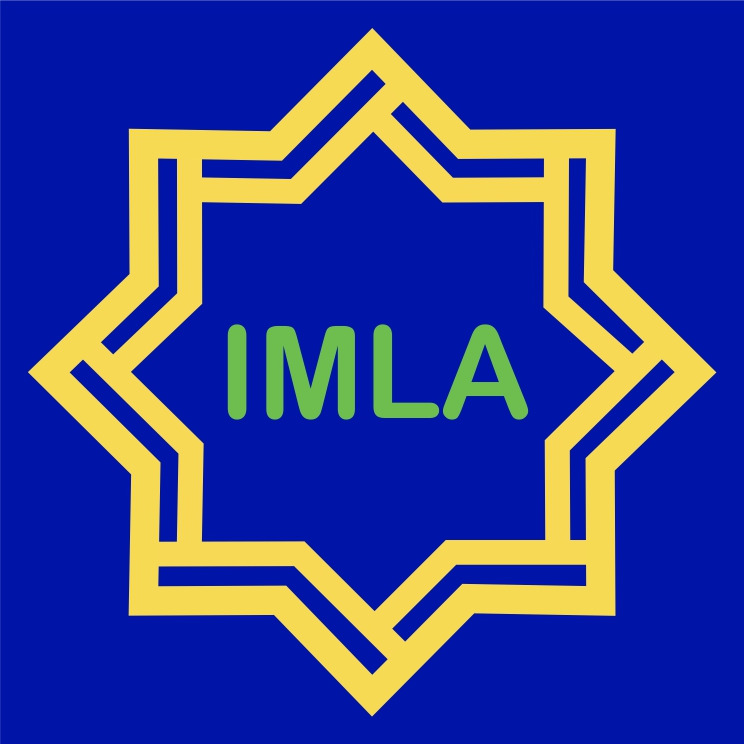Zhawahir al-Azdawajiyyah al-Lughawiyyah fi Ittishalat Jamaáh al-Ãrb fi Indunisiyya (Dirasah al-Halah bi Malang Jawa al-Syarqiyyah)
DOI:
https://doi.org/10.29240/jba.v5i2.2585Keywords:
Language and society, Embong Arab Community, diglosiaAbstract
This research aims to describe and classify the language used by Arab Embong Community in their daily life. Â Language and society always influence each other. The development of language is also along with the development of society. Therefore the study of sociolinguistics as a scientific discipline in which studying language in relation to society is always interesting. The problem in this study is the language used by Embong Arab Community which is an immigrant Arab Community in Malang. This was a field research with a qualitative descriptive method which was investigated using the Diglossia theory. The methods of data collection were observation and interview. The results of this research indicated that the Embong Arab community used three languages, namely Fusha and Amiyah Arabic, Indonesian and Javanese. The three languages were used interchangeably according to the purpose of communication. Fusha Arabic, as the official and unifying language among Arabs, was rarely spoken. They preferred to choose Amiyah Arabic to communicate as a non-standard language variety. However, their Amiyah language was different from the Yemeni Arabs in general. This was due to their long-standing interactions with the local population. The unique thing was that even though they were of Arab descent, due to their high level of interactions with the local population, they often used non-formal Indonesian and Javanese Ngoko in their daily lives. So there were two varieties of diglossia in Embong Arab Community, namely high level language consisting of Fusha Arabic and formal Indonesian and low level language consisting of Amiyah Arabic, non-formal Indonesian and Javanese Ngoko).
Downloads
References
Al Suwaiyan, Laila Abdullah. “Diglossia in the Arabic Language.†International Journal of Language & Linguistics 5, no. 3 (2018). https://doi.org/10.30845/ijll.v5n3p22.
Aslinda, dan Leni Syafyahya. Pengantar Sosiolinguistik. Bandung: Refika Aditama, 2007.
Chaer, Abdul, dan Leonie Agustina. Sosiolinguistik Perkenalan Awal. Jakarta: PT. Rineka Cipta, 2004.
Dimyathi, Muhammad Afifuddin. Madkhal Ila Ilmi al-Lughah. Malang: Lisan Arabi, 2016.
Falay, Ibrahim Shalih al-. Izdiwaajiyyah al-Lughah al-Nadhariyyah Wa al-Tatbiiq. Riyadh: Jaami’ah Malik Sa’ud, 1996.
Faraj, Ahmad Abd al-Rahim Ahmad. al-Lahajaat al-Arabiyyah Baina al-Fusha Wa al-Amiyah, t.t.
Fasold, Ralph W. The Sociolinguistics of Society. Oxford: Basil Blackwell, 1984.
Fauziah, Jiah. “Fitur-Fitur Fonologis Penggunaan Elemen-Elemen Bahasa Arab Dalam Komunikasi Masyarakat Keturunan Arab Surakarta.†AdabiyyÄt: Jurnal Bahasa dan Sastra 10, no. 2 (Desember 2011): 207–32. https://doi.org/doi.org/10.14421/ajbs.2011.10201.
Hasan, Tamam. Manaahij al-Bahts Fiy al-Lughah. Mesir: Maktabah Anglo al-Mishriyyah, 1990.
Hudson. Ilmu al-Lughah al-Ijtima’iy. Kairo: Alam al-Kutub, 1989.
Ilyas, Muhammad Azizzullah. “Diskursus Pemikiran Al-Jahiz Mengenai Gangguan Berbahasa.†Arabiyatuna : Jurnal Bahasa Arab 2, no. 2 (26 Desember 2018): 201. https://doi.org/10.29240/jba.v2i2.572.
Khuli, Muhammad Ali al-. “Ta’tsiiru al-Tadakhkhul al-Lughawiy Fiy Ta’allumi al-Lughah al-Tsaaniyah Wa Ta’liimiha.†Majallah Jami’ah Malik Sa’ud 1, no. 2 (1989): 109–28.
Mishriy, Abbas al-, dan Imad Abu Hasan. “al-Izdiwaajiyyah al-Lughawiyyah Fiy al-Lughah al-Arabiyyah.†al-Majma’ 8 (2014): 76–37.
Nahar, Hadi. Ilmu al-Lughah al-Ijtima’iy Inda al-Arab. Irak: Jaami’ah al-Mustanshiriyyah, 1988.
Ni’mah, Umi Nurun. “Bahasa Arab Sebagai Bahasa Diglosis.†AdabiyyÄt: Jurnal Bahasa dan Sastra 8, no. 1 (19 Juni 2009): 29–48. https://doi.org/10.14421/ajbs.2009.08102.
Oweini, Ahmad, Ghada M. Awada, dan Fatima S. Kaissi. “Effects of Diglossia on Classical Arabic: Language Developments in Bilingual Learners.†GEMA Online® Journal of Language Studies 20, no. 2 (22 Mei 2020): 188–202. https://doi.org/10.17576/gema-2020-2002-11.
Rifa’i, Ahmad. Tsunaiyah al-Lughah Fiy Condet. Jakarta: UIN Syarif Hidayatullah, 2016.
Rokhman, Fathur. Sosiolinguistik Suatu Pendekatan Pembelajaran Bahasa Dalan Masyarakat Multilikultural. Yogyakarta: Graha Ilmu, 2013.
Tohe, Achmad. “Bahasa Arab Fushah dan Amiyah Serta Problematikanya.†Jurnal Bahasa dan Seni 33, no. 2 (Agustus 2005): 200–214.
Wafi, Ali Abd Wahid. al-Lughah Wa al-Mujtama’. Su’udiyyah: Ukadz, 1983.
———. Fiqh al-Lughah. Mesir: Nahdlatu Mishr, 2004.
Zagol, Muhammad Rajiy. “Izdiwaajiyyah al-Lughah.†Majallah Majma’ al-Lughah al-Arabiyyah al-Urduniy, no. 9–10 (21 Maret 2017): 119–53.
Zarkasyi, Ahmad Hidayatullah, dan Mandrasi Amirah. “Nadhariyyatu Ilmi al-Lughah al-Ijtimaa’iy Fiy Ta’liimi al-Muhadatsah.†LISANUDHAD 5, no. 1 (20 Juni 2018): 43–58. https://doi.org/10.21111/lisanudhad.v5i1.1820.
Downloads
Published
How to Cite
Issue
Section
Citation Check
License
Authors who publish with Arabiyatuna: Jurnal Bahasa Arab agree to the following terms:- Authors retain copyright and grant the journal right of first publication with the work simultaneously licensed under a Creative Commons Attribution-NonCommercial-ShareAlike 4.0 International License (CC BY-NC-SA 4.0) that allows others to share the work with an acknowledgment of the work's authorship and initial publication in this journal.
- Authors are able to enter into separate, additional contractual arrangements for the non-exclusive distribution of the journal's published version of the work (e.g., post it to an institutional repository or publish it in a book), with an acknowledgment of its initial publication in this journal.
- Authors are permitted and encouraged to post their work online (e.g., in institutional repositories or on their website) prior to and during the submission process, as it can lead to productive exchanges, as well as earlier and greater citation of published work (See The Effect of Open Access).














 This work is licensed under a
This work is licensed under a 